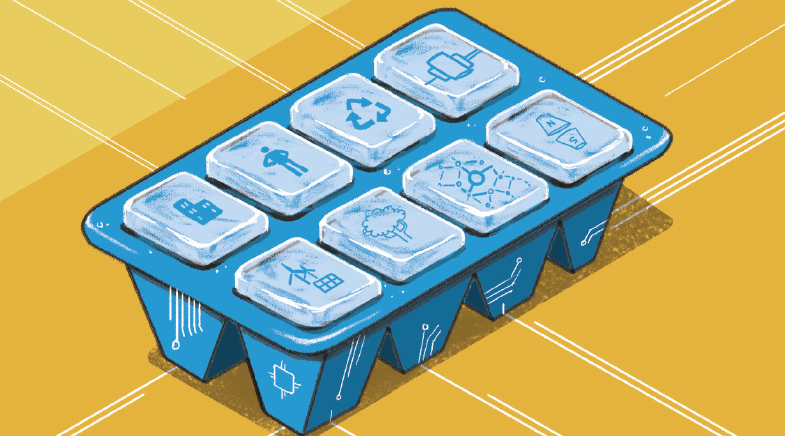Birds and the city
-
- from Shaastra :: vol 03 issue 11 :: Dec 2024 - Jan 2025

Sparse remnant habitats can boost urban biodiversity if native trees are left alone, and waterfronts are not tampered with.
A lone fig tree bang in the middle of New Delhi's urban sprawl seemed like an unlikely haven for birds. But biologist Prakhar Rawal was amazed to find that the tree, though away from greenery in a busy south Delhi locality, had abundant bird visitations.
Figs or Ficus trees are common in the national capital, although they are giving way to their exotic cousins in newer avenues. But the lush gulmohurs, which line many roads and parks, and ornamental palms, the landscaper's current favourite, do not offer much to native and passage migrant birds. The takeaway, says Rawal, is simple. To retain and encourage urban biodiversity, native trees, which offer fruit, harbour abundant insect life for insectivores, and provide safe perches and nesting sites within their canopies, need to find more room in expanding cities. Fig trees are also important for bats and squirrels. "Large canopies are important, trimmed and pruned trees are less attractive to birds," he says.
Rawal is an engineer whose interest in birdwatching prompted him to switch his research work to ecology and ornithology. For six months from December 2020, he trained his binoculars on Delhi's fig trees to study bird visitations. Rawal found that neither an increase in traffic noises nor an increase in other anthropogenic sounds made an impact on the birds. Instead, the tree type and its canopy size had the greatest influence on avian visits.
"We assumed that green cover around the tree would increase bird visitations, but it was an insignificant predictor of bird assemblages," he says (bit.ly/avenue-figs). Rawal, who spread his fieldwork over two seasons — winter and early summer — studied three types of fig trees: banyan (Ficus benghalensis), peepul (Ficus religiosa) and pilkhan (Ficus virens) or the strangler fig, as they are the most abundant with fruit. He counted 29 bird species visiting these trees, including brown-headed barbets and parakeets. He observed frugivores, insectivores, omnivores and even the nectar-feeding sunbirds. His observations challenged other assumptions, too.
Now pursuing his PhD from the University of Turku, Finland, Rawal is involved in a project to revive water bodies in Finland to attract aquatic birds. The basic solutions are the same everywhere, he says, recalling another project he was part of, where he studied bird visitations around the ponds of Delhi. He points out that bird abundance and species richness increase with a heterogeneous shoreline and a greater pond size, even if the pond is in the middle of a populous locality and polluted with plastic and effluents. "But the minute authorities beautify a waterfront by concretising it, a whole set of shore birds like sandpipers are gone," Rawal says.
On the other hand, increasing the heterogeneity of the waterbody — such as adding an island with some greenery or a fountain — brings in more birds, adds ornithologist K.S. Gopi Sundar, the corresponding author of a paper on Delhi's water bodies (bit.ly/capital-ponds) and co-chair of the IUCN's Stork, Ibis and Spoonbill Specialist Group. It is telling that though ponds comprise only 0.5% of the area and are in varying states of degradation, they still support 37% of the city's bird species, the paper states. "Contrary to assumptions, sparse remnant habitats in crowded mega-cities can provide disproportionately high advantages towards boosting urban biodiversity and meeting multiple conservation goals," Sundar, Rawal and others note in the paper.
The focus of urban planners is on fitting out cities of the future into better liveable spaces for humans. While deep-tech solutions may be needed to sort out several urban problems, urban ecologists say that simple interventions in development plans could retain and encourage urban biodiversity.
PAST ISSUES - Free to Read


Have a
story idea?
Tell us.
Do you have a recent research paper or an idea for a science/technology-themed article that you'd like to tell us about?
GET IN TOUCH














